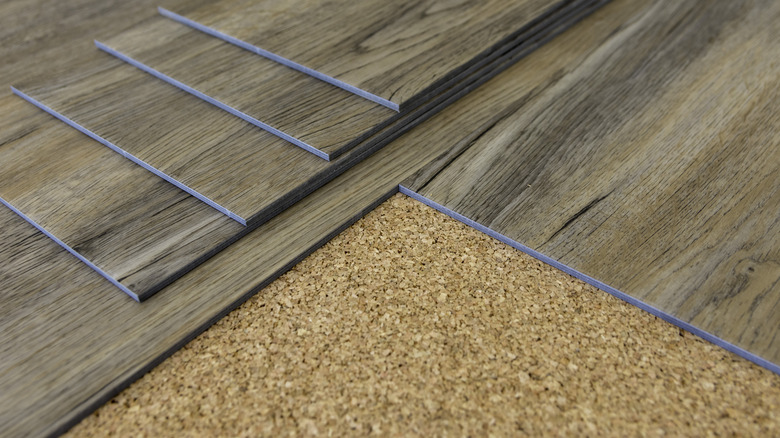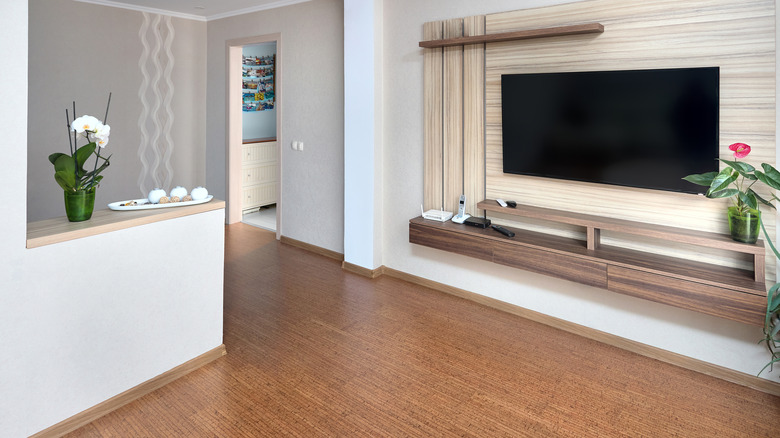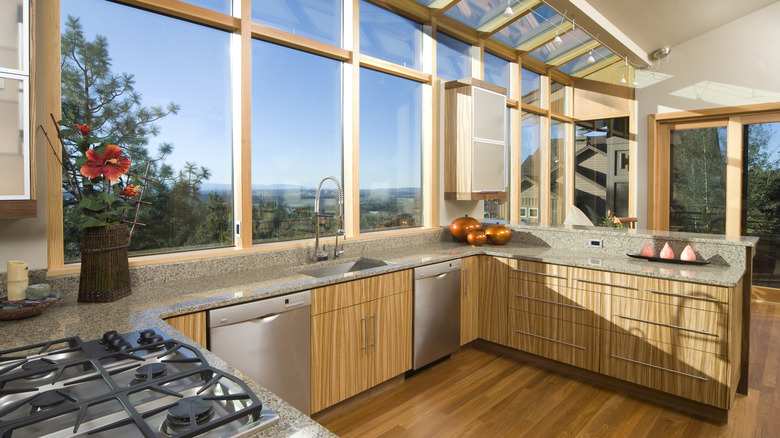Cork Vs. Bamboo Flooring: Which Is The Better Choice For Your Home?
Selecting a material to use for your home's floors may be challenging, especially with so many natural and synthetic options available for installation. If you're looking to stray away from more conventional designs, cork or bamboo might prove to be a worthy fit for your family's flooring needs. Cork and bamboo are sustainable alternatives to the more classic styles of hardwood, tile, and carpet. The substances have also proven to be beneficial for the environment, in the sense that they are manufactured through repurposed materials and eco-friendly harvesting practices. While these two types of floors differ in feel and design, cork and bamboo flooring are both environmentally sound, long-lasting, and present an earthly aesthetic that would greatly suit homeowners looking to incorporate a natural feel to their humble abodes.
Bamboo and cork can also come at a high cost, with contractors typically charging between $5 and $15 per square foot, depending on the quality of each style of flooring being installed. Some homeowners may not feel that cork and bamboo's positive attributes are worth the extra cost, but if properly cared for, both types of flooring can offer your home a charming look for extended periods of time — all while requiring little to no maintenance. Here are some notable differences between cork and bamboo floors in order to help you decide whether either style would be suitable for your home.
Cork flooring
The term "cork" might lead you to think of a corkboard or even the corks placed into bottles of wine to keep from growing stale. Well, the same material is used to develop these floors, with manufacturers taking leftover cork products and grinding and pressing the substance to be developed into flooring.
Just like traditional hardwood, cork comes from trees, though, unlike its more conventional counterpart, cork can be extracted from tree bark without damaging the trees themselves, preventing deforestation and allowing the material to be reproduced at a faster rate than traditional wood. Cork is soft to the touch and absorbs sound efficiently, with just 3 millimeters of the product capable of soaking up to 10 decibels of sound. The material is also a great insulator, with cork's ability to hold heat during the coldest months of the year, depending on the type of cork flooring being installed.
While cork might seem like a pleasant flooring alternative for the average consumer, homeowners with pets might be placed at a disadvantage when attempting to keep their floors in pristine condition. Animals with claws can cause great harm to cork flooring, and the punctures made in the material would have to be repaired or replaced over time to remain in good shape. If placed in a room frequently coming in contact with water, cork floors would also need to be sealed upon initial installment, as well as frequently re-sealed over time to keep from becoming damaged.
Bamboo flooring
Bamboo is commonly associated with its country of origin, China, and has been used by East Asian countries to develop infrastructure, household goods, clothes, and food. Similar to cork and hardwood, bamboo flooring is manufactured from natural materials, with its main component being a rapidly-growing grass with a tough consistency — making it a great substance to be used in construction. As a type of flooring, bamboo is durable and difficult to damage, far outranking even the most durable varieties of hardwood in terms of resilience, including hickory, maple, and oak. Bamboo floors are also easy to clean. Brooms, mops, and vacuums are all safe to use on bamboo flooring, and the material's rigidity makes it even easier to keep up than cork flooring.
Bamboo can be a noisier alternative to cork flooring, however, which might be viewed as an inconvenience to residents or visitors of the home. Bamboo also isn't as efficient an insulator as cork and other types of flooring that are more yielding to human touch, meaning these floors are a greater challenge to keep warm during the winter. On the infrequent occasions that bamboo floors see irreversible damage, re-sanding the material isn't always an option, as it commonly is with wooden flooring. Replacement may sometimes be the consumer's only choice, which can become a costly investment over time.


